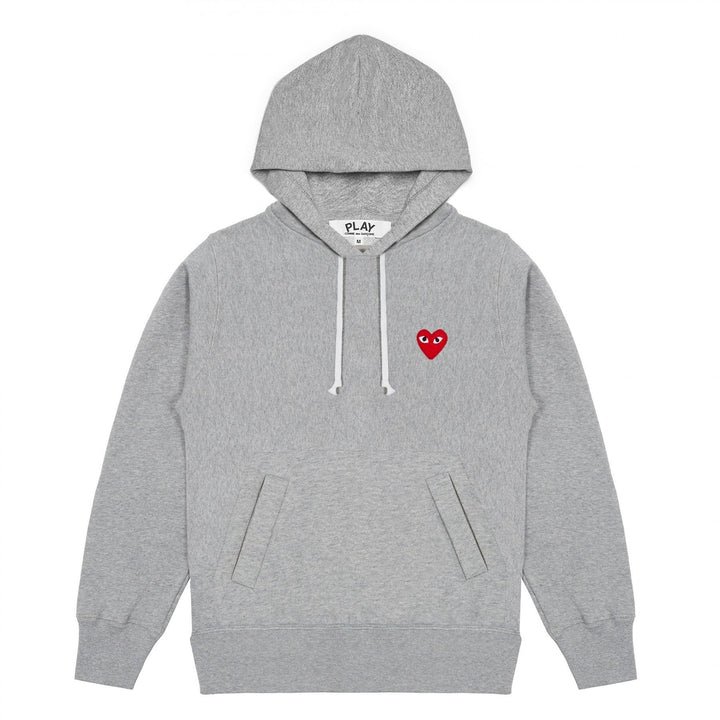From its inception in 1969 by Rei Kawakubo, Comme des Garçons has challenged every traditional notion of fashion. Unlike brands rooted in seasonal trends or commercial appeal, Comme des Garçons is driven by deconstruction, experimentation, and intellectual exploration. Kawakubo has never approached clothing simply as garments but as conceptual pieces that question the very essence of what fashion means. Over the decades, the house has remained a pioneer, transforming the industry with a blend of avant-garde philosophy, radical silhouettes, and a rejection of convention.
The Philosophy of Deconstruction in Fashion
Deconstruction in fashion was not invented by Comme des Garçons, but Kawakubo elevated it into a cultural movement. In her collections, garments are intentionally unfinished, asymmetrical, or irregular, forcing the audience to reconsider traditional ideas of beauty. Seams are exposed, fabric edges are frayed, and conventional tailoring is deliberately distorted. The purpose is not to shock for the sake of provocation, but to create a dialogue between wearer and clothing.
This process is rooted in the idea that imperfection carries authenticity. By breaking down garments to their raw structures, Comme des Garçons removes the polish of traditional couture and exposes clothing as art. The resulting pieces are often described as “anti-fashion,” yet they paradoxically set new standards for the avant-garde fashion scene.
Innovation as a Constant Design Language
While deconstruction forms the backbone of the brand’s identity, innovation is its heartbeat. Kawakubo consistently introduces materials and techniques that were previously unthinkable in high fashion. Plastic, rubber, metal, and industrial textiles have been transformed into wearable expressions on the runway. This relentless experimentation highlights Comme des Garçons’ refusal to be categorized.
The brand also uses innovation as a narrative tool. Each collection tells a story through unexpected textures, exaggerated proportions, and conceptual themes. For instance, her famous 1997 “Body Meets Dress, Dress Meets Body” collection featured padded lumps and bumps that distorted the female silhouette, sparking conversations about beauty standards and body image. It was a clear example of innovation driving cultural discourse.
The Interplay Between Art and Fashion
Comme des Garçons thrives in the blurred line between fashion and art. Kawakubo herself once noted that she does not see a difference between designing clothes and creating art. The runway shows resemble exhibitions, with models walking through sets that resemble art installations. Collaborations with artists and architects further emphasize this boundary-breaking approach.
This has redefined fashion shows into cultural performances rather than commercial presentations. The audience is not merely observing clothing but witnessing a narrative unfold—where fabric, form, and philosophy converge into a unique experience.
Breaking Gender Norms and Redefining Identity
Another critical dimension of Comme des Garçons’ innovation lies in questioning gender binaries. Long before gender-neutral fashion became mainstream, Kawakubo was creating collections that erased the traditional lines between menswear and womenswear. Oversized shapes, utilitarian cuts, and androgynous styling reflected a philosophy that identity should not be confined by clothing.
This commitment to fluidity and inclusivity has not only set the stage for contemporary unisex collections but also positioned Comme des Garçons as a forward-thinking brand ahead of its time. The house created a safe space for individuality, inviting wearers to define themselves beyond societal expectations.
The Commercial Impact of Deconstruction
Although Comme des Garçons is celebrated as avant-garde, its commercial success cannot be overlooked. The diffusion lines such as Comme des Garçons Play, with its iconic heart logo designed by Filip Pagowski, have achieved global recognition. These pieces are accessible to a broader audience while maintaining the rebellious spirit of the brand.
This balance between radical conceptual collections and approachable sub-labels has allowed Comme des Garçons to remain financially stable while never compromising its identity. It represents a rare model where artistic integrity and commercial viability coexist harmoniously.
Collaborations as Extensions of Innovation
Comme des Garçons is also known for pioneering high-fashion collaborations. Long before collaborations became a mainstream marketing tactic, the brand partnered with labels and designers across industries. Collaborations with Nike, Supreme, Louis Vuitton, and H&M pushed boundaries, proving that avant-garde design can successfully enter streetwear and mass-market spaces without losing authenticity.
These collaborations demonstrate Kawakubo’s understanding of fashion as a living ecosystem where luxury and accessibility intersect. By recontextualizing design through partnerships, Comme des Garçons continually expands its cultural relevance.
Cultural Influence and Legacy
The influence of Comme des Garçons goes far beyond clothing. It has shaped fashion education, inspired countless designers, and cultivated a global community of fans who value creativity over conformity. Kawakubo’s approach to fashion as a medium of intellectual inquiry has encouraged designers to embrace risk-taking and individuality.
The legacy of Comme des Garçons is not only in its garments but in its refusal to conform. Its shows, concepts, and philosophies have transformed the global perception of what fashion can be. This enduring impact ensures its place as a cornerstone of modern fashion history.
The Future of Comme des Garçons
Looking forward, Comme des Garçons continues to evolve without abandoning its core principles. With the next generation of designers, including Kawakubo’s protégés, carrying forward her ethos, the brand remains at the forefront of innovation. New challenges such as sustainability, digital fashion, and global inclusivity will undoubtedly shape its upcoming narratives.
Comme des Garçons is uniquely positioned to address these issues through its philosophy of deconstruction and reconstruction. By dismantling established norms and rebuilding them in innovative ways, the brand’s future will continue to redefine fashion’s role in society.
Conclusion
Comme des Garçons represents much more than clothing. It is a cultural force, a philosophical inquiry, and a symbol of creativity without boundaries. Through deconstruction, innovation, and a commitment to questioning conventions, Rei Kawakubo has ensured that the brand remains both timeless and futuristic. Its impact on art, gender identity, commerce, and design continues to resonate, making Comme des Garçons a beacon of avant-garde fashion.

